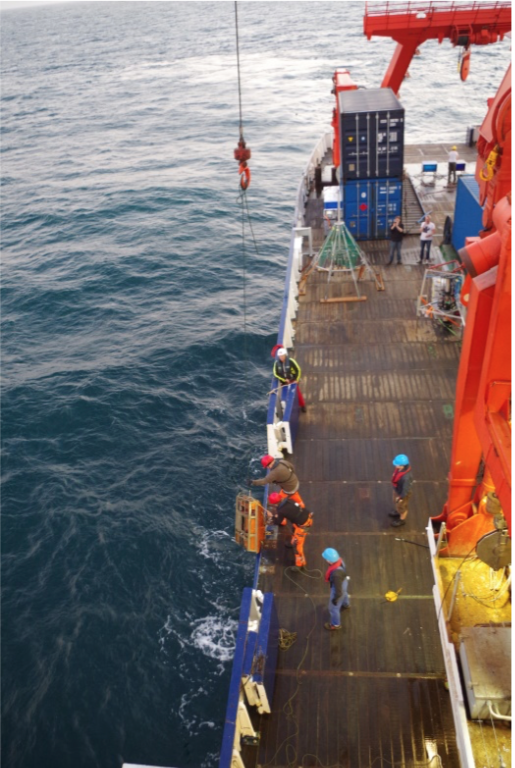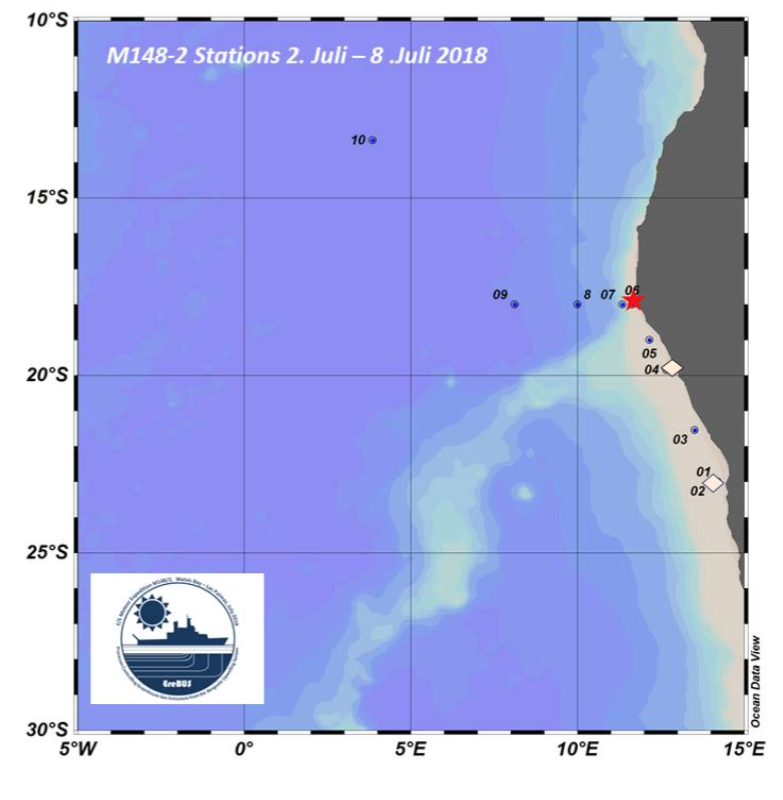- Press Office
- Blogs and More
- Meteor: 2. Weekly Report
Meteor: 2. Weekly Report
2. Weekly Report (July 2, 2018 - July 8, 2018)
As I write, the R/V Meteor finds itself sailing into the open blue waters of South Atlantic Ocean on a northwest heading. We have a pleasant wind and gentle 1 to 2 meter swells from behind and are making excellent time along our third and last station transect.
Along the continental shelf transect in the Benguela upwelling region, hydrographic and geochemical profiling with the CTD showed a well mixed upper water column with increased chlorophyll concentrations indicative of the the high productivity of the Namibian shelf. Oxygen concentrationsdeclined below, although truly anoxic onditions were not present, even a few meters above ground, and dissolved hydrogen sulfide, which frequently occurs in micromolar concentrations in these shelf waters, was not detected.

